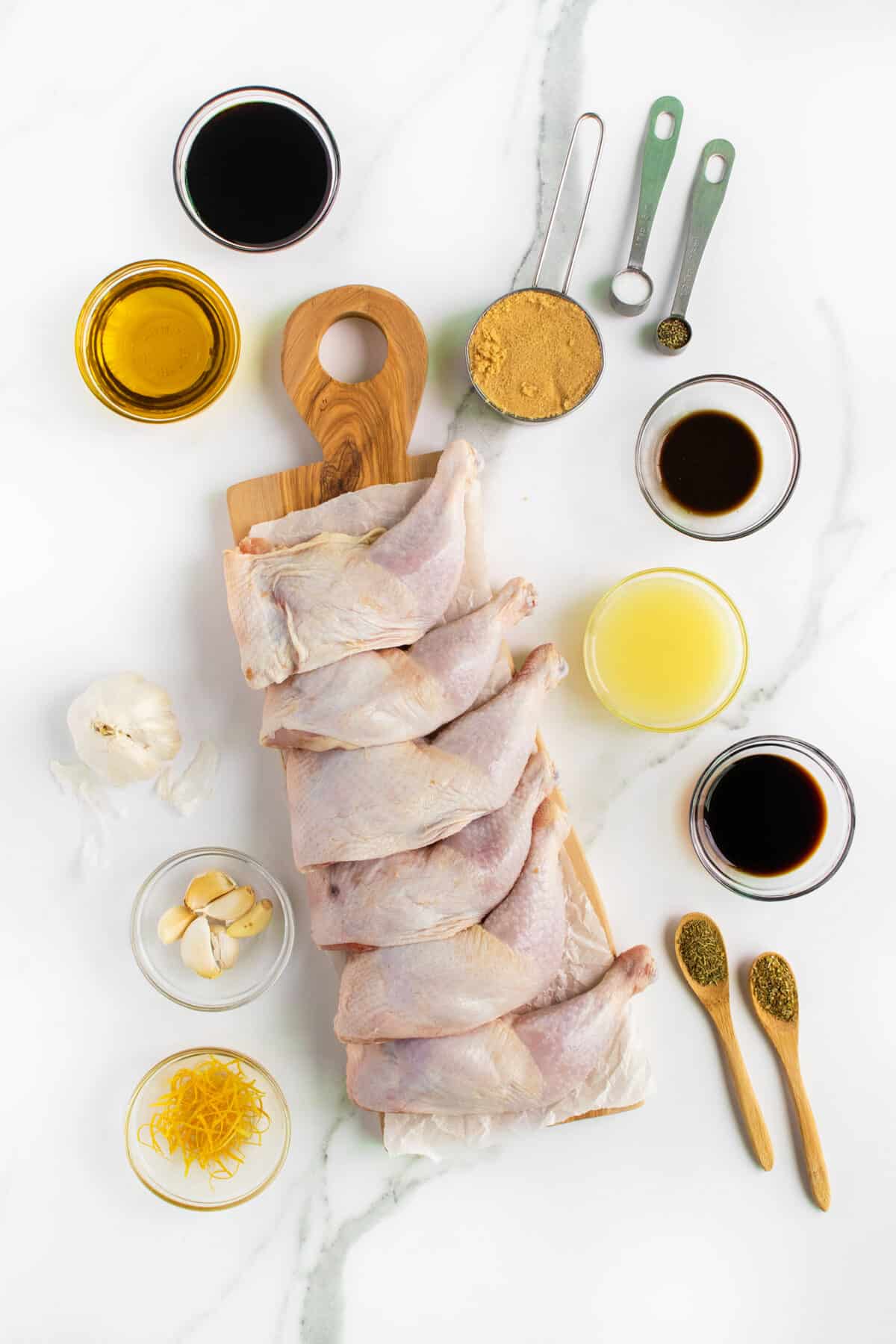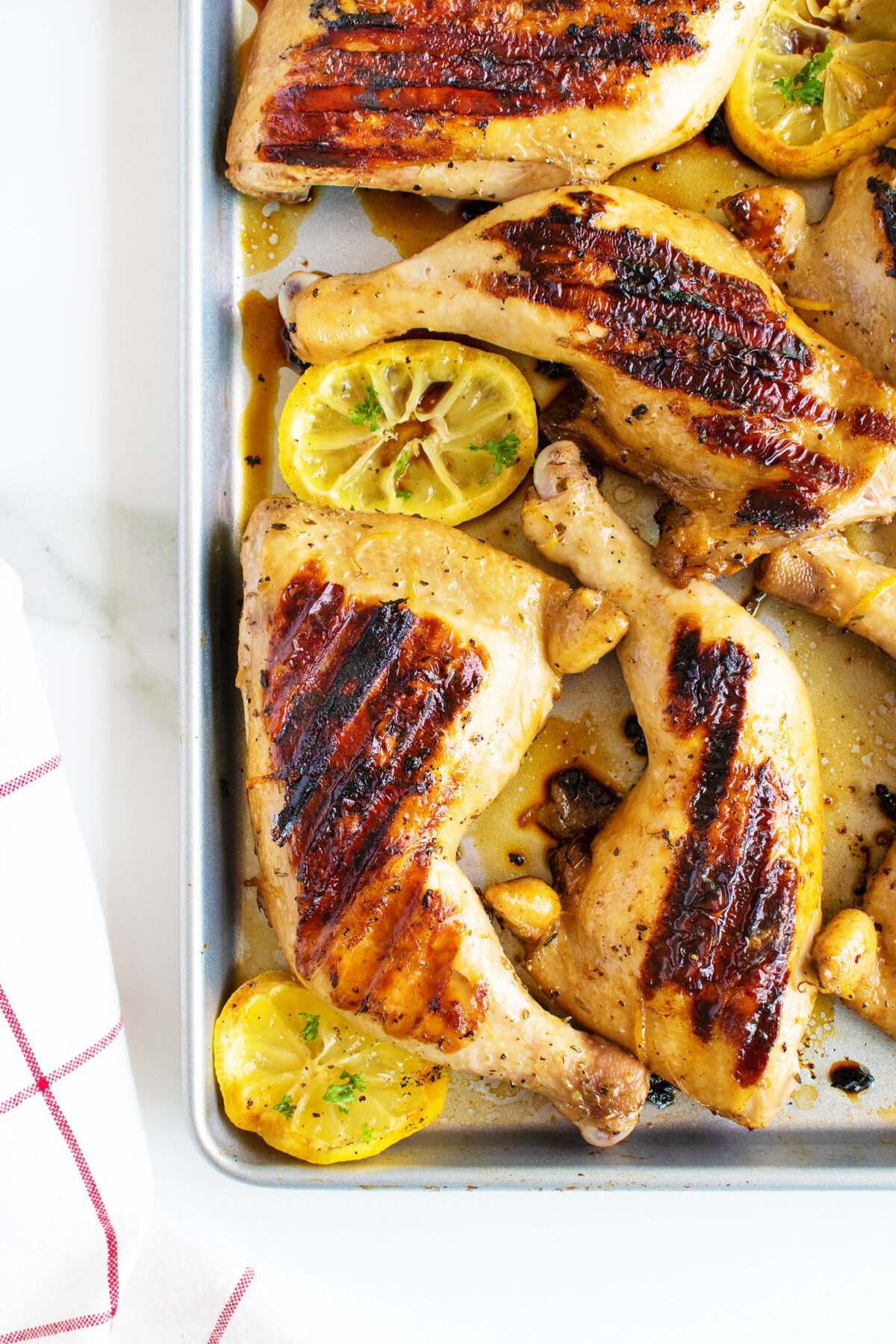This flavor-packed chicken marinade yields tender, juicy chicken no matter which cut of chicken you use! You can do boneless, skinless chicken or even skin-on pieces for frying – it should taste great no matter what you do.
Why not learn more about Worcestershire Sauce for this recipe? Or try to make some tasty Chicken Seasoning instead? This Marinade also works excellently with the chicken in my Grilled Chicken Salad!

The Best Chicken Marinade
Chicken is always a dependable meat for grilling, both because of its simplicity and because of how well it can soak up other flavors.
One of the best ways to imbue your chicken with extra delicious flavors is to soak it in a delicious and heavily seasoned marinade.
This marinade recipe combines plenty of great standard marinade ingredients while also mixing in a few specific spices and flavorings like mustard and balsamic vinegar for a unique, distinctive flavor.

The Best Chicken Marinade Ingredients
Make sure you look at the recipe card at the very bottom for the exact amounts so that you know exactly what to buy for this recipe.
• Chicken
• Extra virgin olive oil
• Garlic
• Brown sugar
• Lemon juice
• Soy sauce
• Balsamic vinegar
• Worcestershire sauce
• Dried thyme
• Dried oregano
• Salt & black pepper
• Lemon zest

How To Make The Best Chicken Marinade
• Combine all ingredients together, whisking to ensure that they are mixed completely
• Taste test and add more sugar and vinegar to taste – only salt if you think it needs it!
• Place the chicken pieces into a large zip-top plastic bag and pour the marinade into the bag, covering the chicken completely
• Place in the refrigerator and marinate for 2 hours, occasionally turning to make sure all areas of the chicken are marinated
• Preheat the grill and, when the grill is hot, brush and oil the grill
• Remove the chicken from the marinade and place it on the hot grill
• Brush the chicken with the marinade from the container and then discard the leftover marinade
• Move the chicken out of the flame if there is a flare-up at any time
• Cook, being careful to watch for flare-ups, until the meat has reached 165 Fahrenheit for chicken breasts, or 185 Fahrenheit for chicken thighs
• Remove, let them sit for 5 minutes and then serve

Can You Leave Your Chicken In The Marinade Overnight?
A lot of recipes involving marinades contain the instruction to leave the food you are marinating in the liquid for only a few hours at a time and then remove it.
However, what happens if you just forget about it and leave it overnight? What is the worst that could happen?
Well, for a lot of marinades, not a lot would really happen, but this marinade has a pretty large amount of vinegar in it. Vinegar, and any acid in general, has an interesting effect on meat when left in contact for a long time.
For just a few hours, the acid will help flavor and tenderize the meat. Left overnight, though, and the acid will actually start to cook the outside of the meat chemically. If you tried leaving your chicken breasts in this marinade for too long, the outer edges of the meat would basically turn cooked and rubbery.
While you can leave meats in most marinades for longer than just a couple of hours, when it comes to a marinade with a good amount of acid in it, it is best to just take it out when the recipe tells you to.

How To Get The Balance Of Flavors Just Right In This Marinade
The key to a really great marinade is to ensure that all of the flavors are balanced and perfect before you put your chicken in it.
Once the meat goes into the marinade, there is no stopping all of its flavors from imbuing the meat entirely – this means that you need to make triple sure that you actually like the taste of the marinade before using it!
For example, you need to be carefully monitoring and adjusting the acidity here.
The balance in this recipe will make for a fairly salty and acidic marinade, something that will really help to flavor the chicken. However, if you prefer it a bit less acidic, feel free to tone down the balsamic vinegar just a little bit.
Saltiness is another thing you need to be carefully watching – most of the salt here comes from the combination of Worcestershire sauce and soy sauce, but you might find that you want it a little bit more salty than this recipe makes.
If that’s the case, don’t be afraid to add salt a little bit at a time, tasting as you go. Remember: you can always add more, but you cannot take it out!
Just add salt a little bit at a time, and then taste in-between additions to make sure that you are happy with it.
As long as you make changes slowly, you should end up with something delicious and hopefully not over-seasoned!
Looking for more delicious Marinades, Sauces & Salad Dressings? Try these out:
• The BEST Teriyaki Marinade Recipe
• The Best Steak Marinade Recipe
Happy Cooking
Love,
Karlynn

PIN THIS RECIPE to your DINNER RECIPES Boards and Remember to FOLLOW ME ON PINTEREST!


The Best Chicken Marinade
Ingredients
- 4-6 chicken pieces of choice
- ½ cup Extra Virgin Olive Oil
- 6 large garlic cloves (minced)
- 1/2 cup brown sugar
- 1/4 cup fresh lemon juice
- 1/4 cup low sodium soy sauce
- 2 Tablespoons balsamic vinegar
- 1 Tablespoon Worcestershire sauce
- 1 teaspoon dried thyme
- 1 teaspoon dried oregano
- 1 teaspoon salt (only if needed)
- ½ teaspoon freshly ground black pepper
- 1½ teaspoons lemon zest
Instructions
- Combine all ingredients together, whisking to ensure that they are mixed completely. Taste test and add more sugar and vinegar to taste at this point if desired. Add salt only if you think you need it!
- Place the chicken pieces into a large zip-top plastic bag. Pour the marinade into the bag, covering the chicken completely.
- Place in the refrigerator and marinate for 2-3 hours, turning occasionally to make sure all areas of the chicken are marinated.
- Preheat the grill. When the grill is hot, brush and oil the grill.
- Remove the chicken from marinade and place on the hot grill. Brush with the marinade from the container then discard the marinade.
- Move the chicken out of the flame if there is a flare up at any time!
- Cook, watching carefully for flare-ups, until the meat has reached 165°F for breast meat and 185 °F for thighs.
- Remove and let sit for 5 minutes, then serve.
Notes
- Taste test before you add the chicken and adjust the seasonings to your own personal liking
- Nutritional values are for the entire sauce which does not all stay on your chicken











Leave a Comment or Recipe Tip